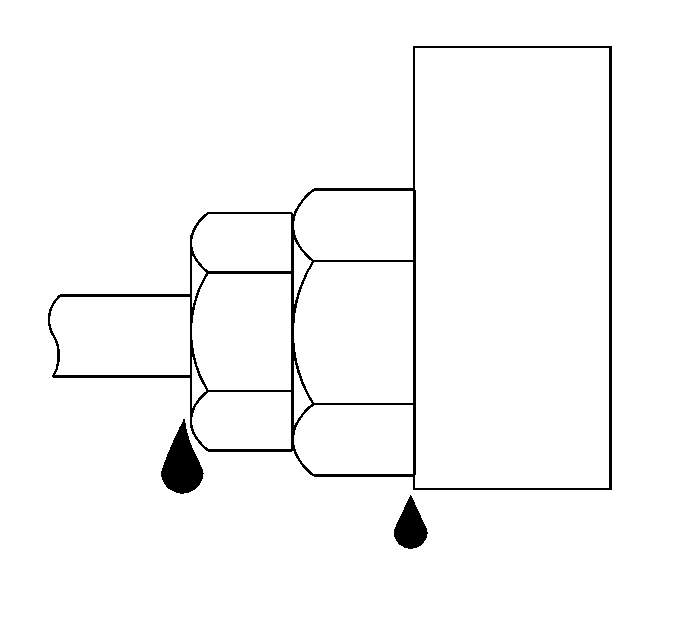Notice: If the power steering system has been serviced, an accurate fluid level
reading cannot be obtained unless air is bled from the steering system. The
air in the fluid may cause pump cavitation noise and may cause pump damage
over a period of time.
Bleed the power steering system under the following conditions:
| • | After replacing any component |
| • | After disconnecting the fluid line |
| • | After servicing the power steering hydraulic system |
| • | In order to correct steering system noise |
Bleed the power steering system in order to prevent the following conditions:
| • | Improper system operation |
Prior to Bleeding the Power Steering System
Inspect the power steering system prior to bleeding the system. Verify
that the following conditions apply:
| • |

The power steering hoses
are not touching any other part of the vehicle. |
| • | The steering system noise is not caused by a hose touching any
of the following: |
| • |

The hose connections are
tight. |
| • | Loose connections are not allowing air into the system. |
Special Conditions
If a problem still exists after bleeding the power steering system,
proceed as follows:

- Ensure the power steering
fluid is free of foam or bubbles. Periodic bubbles found during Step 7
of bleeding the power steering system may indicate the following conditions:
| • | A loose connection in either the return hose or the pressure hose. |
| • | A leaky O-ring seal in either the return hose or the pressure
hose. |
- Inspect the power steering fluid for a milky, opaque, or light
tan discoloration.
If the fluid is discolored or bubbles appear in the fluid, perform the
following procedure:
| 2.1. | Turn the ignition switch to the OFF position. |
| 2.3. | Repeat steps 9-15 of bleeding the power steering
system. If a problem continues, inspect and replace any of the following defective
components: |
| • | The return hose O-rings |
| • | The pressure hose O-rings |
| • | The gear cylinder line O-rings |
| 2.4. | Fill the power steering system. |
| 2.5. | After replacing any defective components, repeat steps 9-15
in order to verify the condition is corrected. |

- Inspect the power steering
pump for a whining or groaning noise.
If a noise is heard, run the engine. Ensure the hoses are not contacting
the frame body or the engine.
- Cool down the fluid and repressurize the power steering system
by performing either of the following methods:
Method 1: Normal Cool Down
| 4.1. | Turn the engine off. |
| 4.2. | Wait for the system to cool. |
| 4.3. | Install the reservoir cap. |
Method 2: Partial Fluid Replacement
| 4.1. | Turn the engine off. |
| 4.2. | Remove the fluid from the reservoir using a suction device. |
| 4.3. | Refill the system with cool, clean fluid. |
| 4.4. | Install the reservoir cap. |
- Start the engine.
- Allow the engine to reach the normal operating temperature.
- If any noise continues, remove and replace the power steering
pump. Refer to
Power Steering Pump Replacement
.
- After replacing the power steering pump, bleed the power steering
system again.




